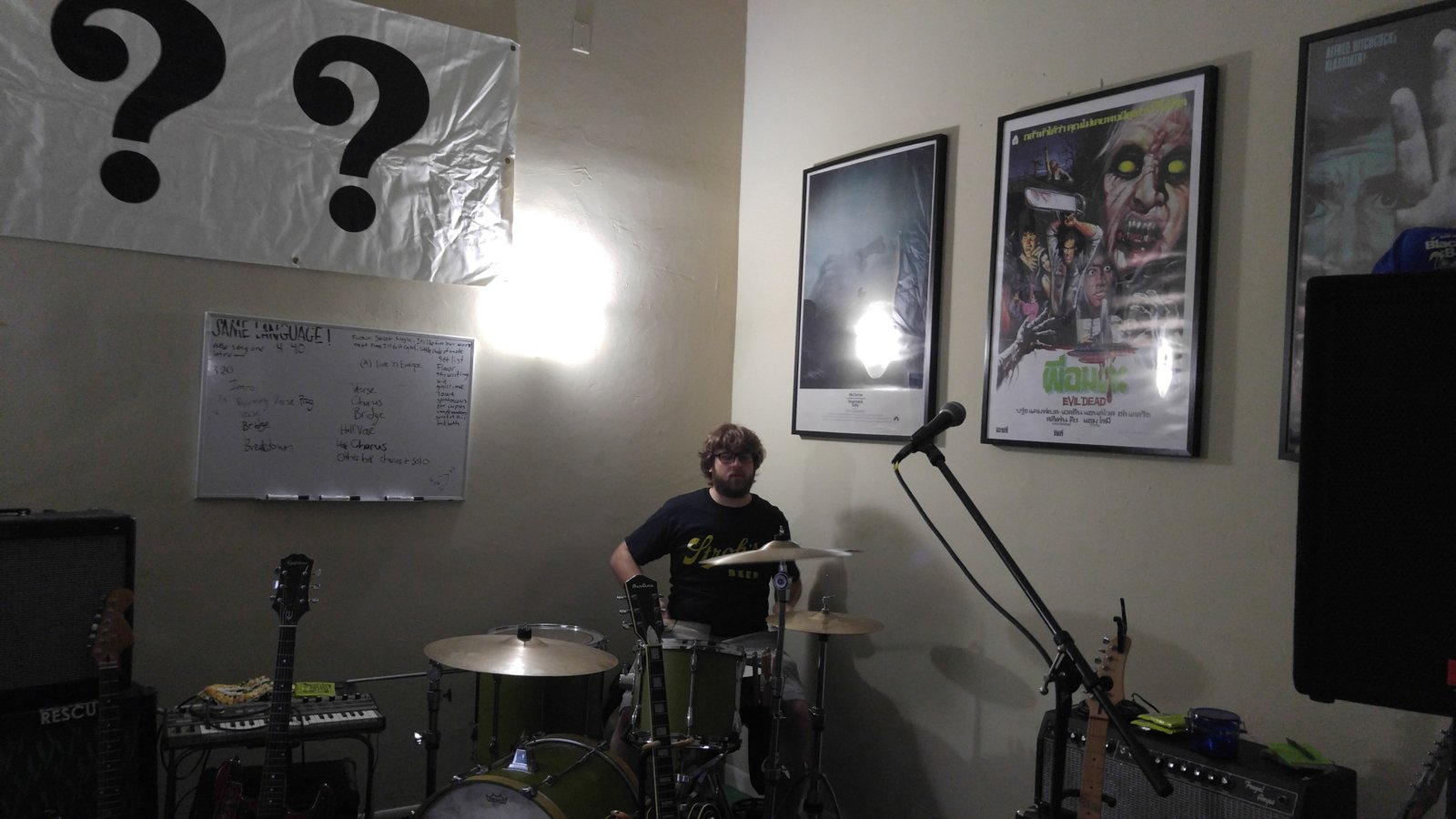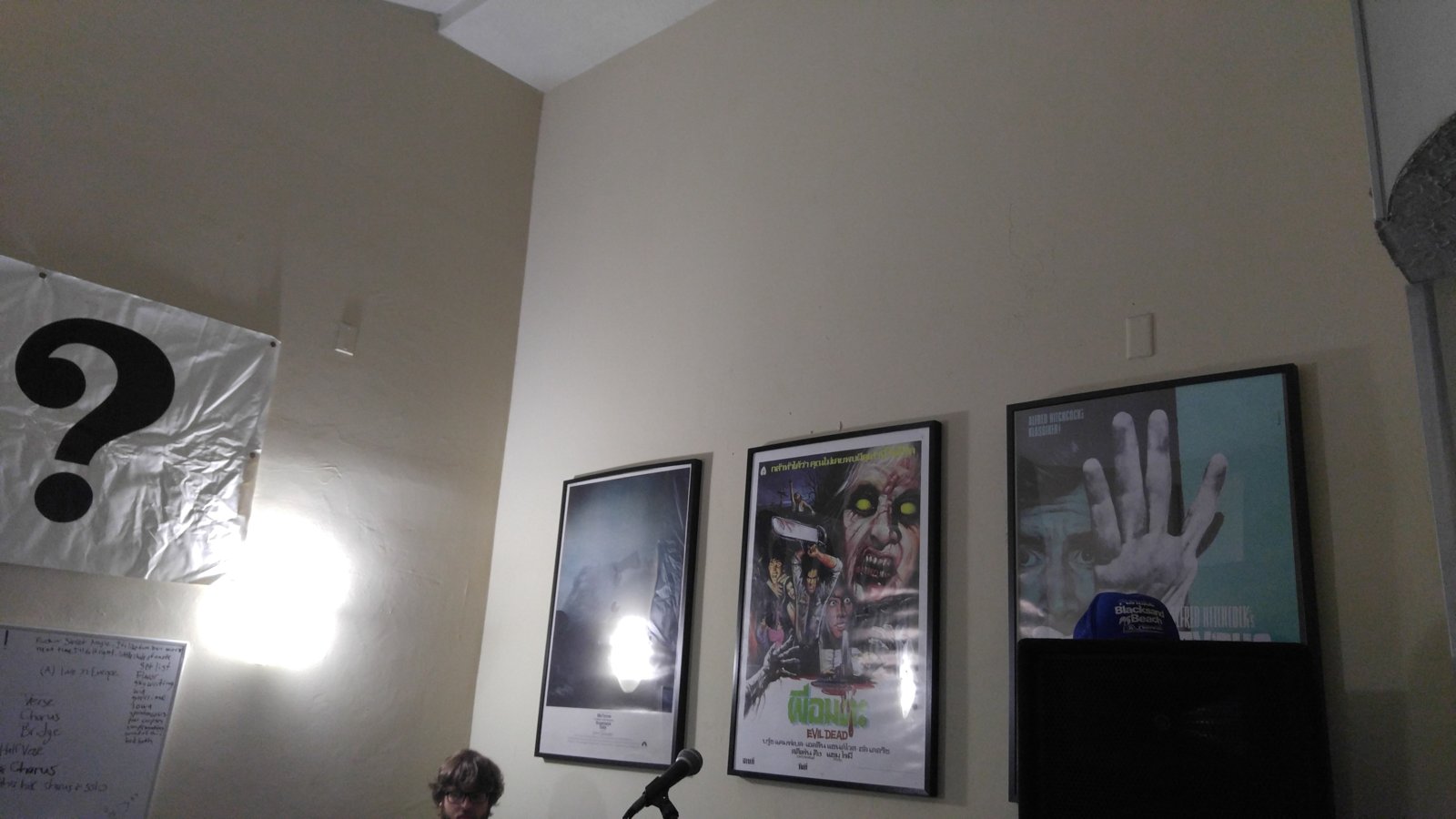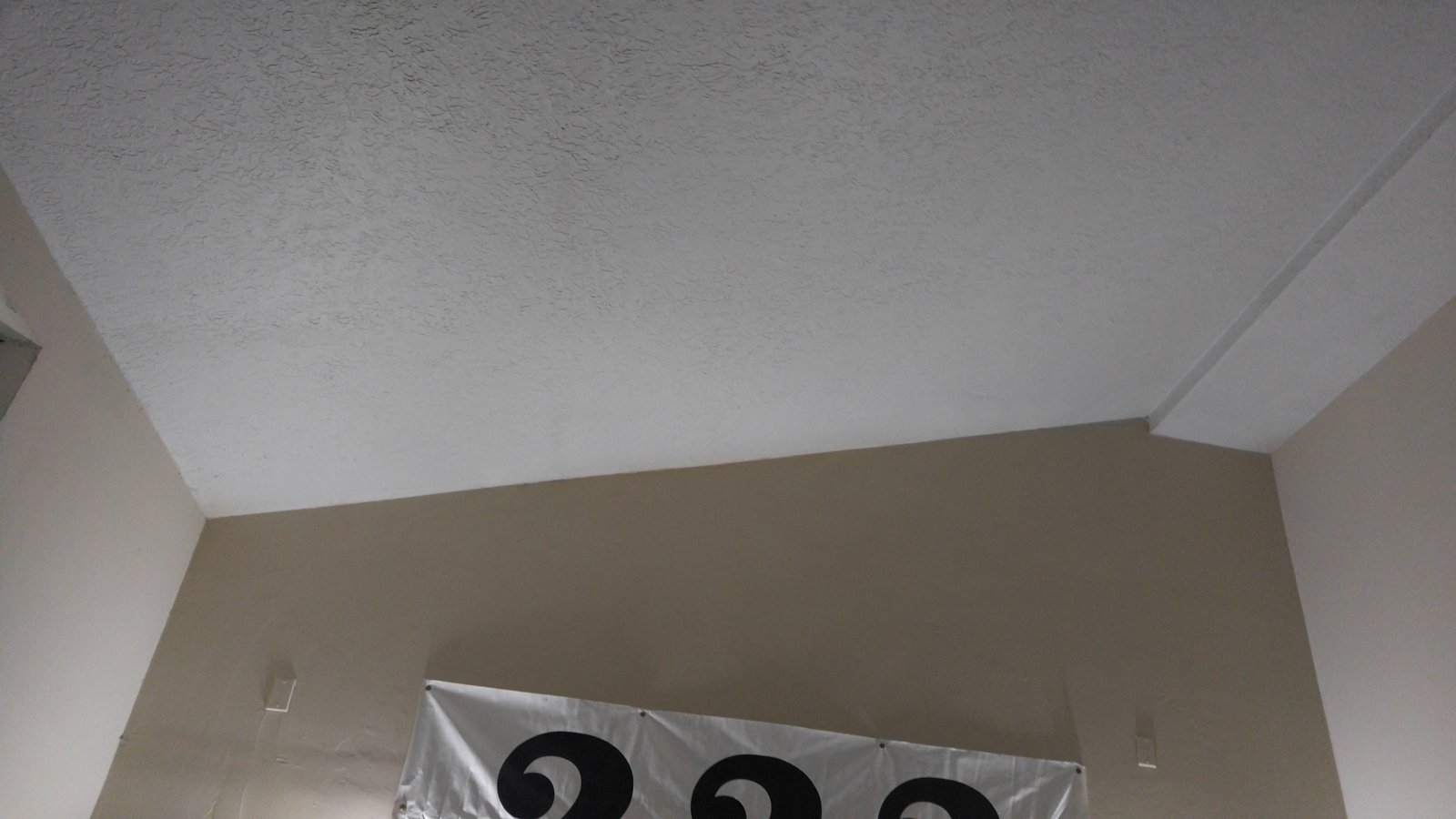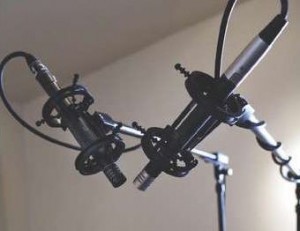Hey guys. New to this forum. My band is going to be demoing Drums (possibly "tracking" if it sounds good) for an ep here in a few weeks. Outboard gear is fine, close mics for drums are fine. Room is...bad. I'm aware of it, I'm doing what I can with it. Its a tall cement room. 20 ft tall. 15x15 room. Now the acoustics are not that bad. No slap back sounds no "ping" or anything. But I'll find out more when I push record.
The question is. What mics would you use for overheads in a tall, tentatively bad sounding room? Money is no object (within reason. We are renting. $50 for a u87ai for ex.) do I spend the money on something nice like that? What about some SDCs? I guess I am trying to avoid the sound of the room. I know that's counterintuitive, but I'm playing with the cards I've got. What mics would give the best sound for a bad room.
Tags
Comments
Jooonna, post: 438178, member: 49839 wrote: Room is...bad. I'm a
Jooonna, post: 438178, member: 49839 wrote: Room is...bad. I'm aware of it, I'm doing what I can with it. Its a tall cement room. 20 ft tall. 15x15 room. Now the acoustics are not that bad. No slap back sounds no "ping" or anything.
I'm a little confoozled by this statement - on one hand, you say "the room is bad", and on the other hand you say "the acoustics are not that bad".
Jooonna, post: 438178, member: 49839 wrote: I guess I am trying to avoid the sound of the room.
If you are using overhead mics, you'll end up picking up the room to some degree - that degree is going to depend on placement; height/distance of the OH placement from the source. As Sean mentioned, dynamic mics will traditionally pick up less of the room, but even dynamics are not going to be a huge improvement if you happen to place them far enough away from the kit. The downside to using dynamics as OH's is that they won't pick up the fast transient details of the cymbals like a pair of good condensers will.
There are several good go-to mics for OH use; Neumann KM 84's/85's are popular, as are AKG 414's. Shure KSM-137's are another popular/good choice.
But, in the end, you're gonna have to deal with that room to some degree, regardless of which mics you use. The question is... until you actually listen to the drums in the room and record them, how do you know that the drums might not in fact sound awesome? John Bonham's drums on Led Zeppelin's When The Levee Breaks were set up at the bottom of a 3-level cement stairwell, with a pair of Beyer Ribbon mics placed way above the kit, on the second level of the stairwell, and for that song, the drum sound fit perfectly.
That all being said, while I consider myself to be a fairly solid recording and mix engineer, I'm most certainly not an acoustics expert, so I can't take the dimensions of the room, ( 15' x 15' x 20') coupled with the the construction materials used ( cement) and tell you what to expect, but there is a long-time member here who can, so I'll page him for you:
@Brien Holcombe
Brien may tell you - based on the dimensions and materials of the room - that you're asking for trouble in certain frequency ranges, or, he may also end up giving you the same answer that I have - that until you actually do something in there, you won't know for sure one way or the other. He may also be able to suggest temporary treatment solutions.
FWIW
d.
DonnyThompson, post: 438181, member: 46114 wrote: John Bonham's
DonnyThompson, post: 438181, member: 46114 wrote: John Bonham's drums on Led Zeppelin's When The Levee Breaks were set up at the bottom of a 3-level cement stairwell, with a pair of Beyer Ribbon mics placed way above the kit, on the second level of the stairwell, and for that song, the drum sound fit perfectly.
Thats a really good point Donny, if the OP is going for that big Bonham sound, the room may actually work to his advantage in this instance.
DonnyThompson, post: 438181, member: 46114 wrote: until you actually do something in there, you won't know for sure one way or the other
Agree with you there.
It would be interesting to hear Briens' opinion...good call.
" Its a tall cement room. 20 ft tall. 15x15 room. Now the acoust
" Its a tall cement room. 20 ft tall. 15x15 room. Now the acoustics are not that bad. No slap back sounds no "ping" or anything."
So you have carpet on the floor is that correct or no?
A square room will produce slapback, no way around it due to the double pair of same dimensioned hard boundaries. Three things come to mind why you are not hearing it.
1. carpet on the floor.
2. There is just enough wall (pictures, etc.) covering to tweak what this room is producing...doubtful but probable.
3. The room has a wall that is angled enough to distribute the slapback enough to lessen the impact of if it were a true square room.
I will stake my reputation as a fine individual that number 3 is most likely the case.
But to say that the acoustics are not bad is to be deceived in particular with a rigid boundary of concrete. What happens is that, this is a good thing but comes with a warning, most of the sound you produce stays in the environment with leakage to escape thru AC ports, doors and or windows. Keeping all the sound in a room is a good thing, if the room is large enough...yours is not. It is tall enough by the grace of the god you believe in, but the short distances between the walls are where you lose your quality.
This is why you will have to treat the room if only for the sake of lowering and balancing the overall noise floor. But like you said, you will not know this until you push record.
I would like to add something. It is a known effect that where walls, ceilings and floors meet the observed sound levels can be increased 6+/- dB. If you have seen discussion on corner treatments/bass trapping, this is, in part, the reason.
Having the drums in the corner, while giving that boost, is most likely going to produce an unbalance monitoring situation. Oh, I know, the drummer says it sounds GREAT. That is because he has his head in that 6+/- dB increase and is not out in front.
If all you are doing are drums, I would move those things out of the corner, not to the center of the room, but maybe 3 or 4 feet from a wall and offset there again as much.
You might find something better just by the simple placement of the kit in respect to the room.
You might be surprised, when you push record, how much more sens
You might be surprised, when you push record, how much more sensitive good mics are than your ears. High-end mics will 'hear' absolutely everything in the room, and as Sean has suggested, there are far worse things than using a garden-variety dynamic mic like an SM57 for overheads. If you are just trying to reduce some of those room reflections hitting the back side of a directional mic, these little foam baffles from Auralex help. I've used them in a number of situations where the room had much more volume (in terms of cubic feet) than I wanted to be apparent on the recording.
But in your case, I'd be wondering if this room was the only / best option in the long run. If it's the only space available, all you can do is make the best of it.
Your sloped ceiling is certainly helping you, I think applicable to Brien's #3. And to Brien's other point, I recorded drums a couple weeks ago at someone's hunting camp. It was a beautiful camp, but very ordinary in terms of floor plan, dimensions, ceiling height. Tile floors with several large area rugs, wood plank walls with a stone fireplace in the middle on one of the long walls, and a plaster ceiling. They started talking about setting up the drums in a corner, because that's how they set up at practice at the drummer's house. I was able to talk them out of that, and got him to set up much more in the middle of the room on one of the area rugs with his back to the fireplace. I'm 100% sure that the results were much more balanced than if I had let them place the drum kit in the corner.
Thank you all so much for your input. Our plan so far is to use
Thank you all so much for your input. Our plan so far is to use some bass traps in the corner. Put the kit not in the middle but to the side of the of the room. And use some gobos we are going to grab from a friends legit studio (we'll probably record the actual ep there as I said this is a demo) I'm leaning towards small diaphragm. Km 84s perhaps. Again. Thank you all so much. You've been so much help. I'd love for you to critique it when I'm done
Jooonna, post: 438220, member: 49839 wrote: we'll probably recor
Jooonna, post: 438220, member: 49839 wrote: we'll probably record the actual ep there as I said this is a demo
Well, to me, there's no such thing as 'demo" quality or "press" quality. Every time I start a new project, I approach it with the same intent - to make a record. If I were you, I'd make the session as efficient as possible, but strive for the best sonic quality you can. You never know when things will click, and you get stellar performances. If you haven't taken the time to set things up in the same manner you would to make a pro recording, and haven't captured it with attention paid to the details, then you'll be plagued by things that will turn out to be a pain in the ass to fix later during the mix process.
Get things right, the best that you can, from the get-go ... regardless of whether your clients are approaching the project in the same way or not.
While you can't really control their talent or performance caliber, you can control the quality of the recordings.
In fact, that's your job. ;)
In my humble opinion of course.
DonnyThompson, post: 438250, member: 46114 wrote: Well, to me, t
DonnyThompson, post: 438250, member: 46114 wrote: Well, to me, there's no such thing as 'demo" quality or "press" quality. Every time I start a new project, I approach it with the same intent - to make a record.
I hear ya Donny, and I take the same approach myself. And as much as I respect and agree with what you're saying, I still think there is a lot of value in a band tracking through the material even though (or maybe specially IF) they intend to record it all again later at a 'legit studio'. Early on (early 90's), before my band would go to a commercial studio for an album project, we'd track all the songs to my rinky-dink 4-track Tascam in our practice pad. It got everyone comfortable with the recording process (focusing through the repetition, playing with headphones, REALLY listening to one another, etc.) and it was good practice for playing when that expensive red light came on at the studio. It also gave us the chance to hear the songs from a different, more analytical perspective and fine tune the arrangements, correct specific parts that weren't tight enough (or even clashing when heard clearly), plus it gave everyone a chance to work out their solos before we were collectively paying by the hour. Things end up on tape you might not hear clearly enough otherwise, playing live in a less-than-ideal rehearsal space.
When it came time to track the songs at the real studio, we had blocked out the studio for a weekend. We laid down drums, bass, rhythm guitars, and keyboards all together in the same pass. In about half of day #1, with no more than a few takes per song the instrument beds for all 8 songs were done. The second half of Day#1 was a few keyboard overdubs, and mostly guitar solos. Day#2 was all vocals, and still had half a day for rough mixes to take home. We came back a month or so later for a day of final old-school mix down (tape to tape through an analog hands-on-faders console). I think we got the best out of everyone because we had it together before we got there. And I think some of that swagger of a band that was confident in what they were doing ended up on the tracks.
To me just having the solos worked out in advance is easily worth the effort of pre-production. It avoids the dreaded 200 passes at the same 'improvised' lead break and the rest of the band getting antsy and annoyed about what the time = money all of this experimenting is costing them - until finally as the pressure builds, the guitar player says those words I always hate to hear, "That's good enough". It was a huge benefit having my solo worked out to the point I could lay down exactly what I wanted to do in one take, and go back and double it in one more, - especially valuable back then, when we only had a finite number of analog tape tracks (16-24), even at a 'legit' studio in those days. I realize the realm of unlimited tracks we work in now will let you take a 1000 stabs at it and comp something together, but if you're paying by the hour….. a little pre-production can really pay off both financially and performance-wise.
I will say renting U87s to do all that seems over the top to me at this point, but if they've got the budget to rent great mics for a demo, and then go to a 'legit studio' later, more power to them.
dvdhawk, post: 438255, member: 36047 wrote: we only had a finite
dvdhawk, post: 438255, member: 36047 wrote: we only had a finite number of analog tape tracks (16-24),
lol! it's funny to me to hear someone describe 24 tracks as a finite number of tracks ..... i remember when i first worked in a 24 track studio thinking to myself what in the world am i going to do with 24 tracks ? 4 for drums / 2 for bass / leaves 18 tracks for vocals guitars keys ....
dvdhawk, post: 438255, member: 36047 wrote: a little pre-product
dvdhawk, post: 438255, member: 36047 wrote: a little pre-production can really pay off both financially and performance-wise.
I couldn't agree with you more, Hawk. Rehearsal and Pre-Prod are crucial, it accomplishes everything you mentioned.
It was my impression that the location that they were going to record the "demo" in was the same location that they'd planned on recording their EP in.
I do agree that if this is the case, that renting expensive mics and gear to do this "scratch" session with seems a bit much; as they could accomplish this with 57's and 58's and a halfway decent multi-channel interface.
Then again, there's always that chance of that all-too elusive "magic" happening, and that's impossible to predict - which is why anytime I ever had a band in the studio who were going over a song, or parts that they were working out; or anytime I rolled tape and played backing tracks for a performer to rehearse to or warm up with, I always recorded the performance(s).
I wouldn't even tell them that I was doing this, because sometimes people perform better if they aren't aware that they are being recorded - it's that "red light syndrome" we've all seen happen, that can so often change how an artist performs.
I recall doing a session a few years back, working with a solo female artist; we were laying down lead vocal tracks to backing tracks that had already been recorded for her. I got a suitable cue mix for her, and told her to relax, that we were just going to do a run through of the song a few times, so that she could warm up, and so I could get levels, or change mics or mic positions if needed. She stepped up, and tracked a beautiful performance - and I captured it. I even thought to myself, "wow, I don't know how she's gonna top this one", but I maintained a poker face, as I didn't want her to see any reaction on my part either way.
We finished that take, and I didn't tell her what I'd done, and told her that we were then going to record her vocal track. We did several takes, and while she sang very good, the alternate performances after that first one were nothing like that first "run through" take. That first "scratch" take turned out to be the take, and that's the performance that ended up on the record.
Funny what we remember... ;)
Kurt Foster, post: 438260, member: 7836 wrote: lol! it's funny t
Kurt Foster, post: 438260, member: 7836 wrote: lol! it's funny to me to hear someone describe 24 tracks as a finite number of tracks ..... i remember when i first worked in a 24 track studio thinking to myself what in the world am i going to do with 24 tracks ? 4 for drums / 2 for bass / leaves 18 tracks for vocals guitars keys ....
LOL, I also remember having similar thoughts at that time - "what the hell do you need 24 tracks for? Do they use all those remaining open tracks for things like one little glockenspiel note, or a quick vocal insert, or what?"
I think there's something to be said for having a finite number of tracks to work with.
I often miss those limitations. Having them forced us to make decisions, and to be creative; and it forced the artists to be prepared, because they knew they didn't have 50 tracks available to do 50 alternate takes of a performance...
That first studio we went to was 16 tracks on ½". We'd roughed
That first studio we went to was 16 tracks on ½". We'd roughed everything out on 4-track, so 16-tracks was like a dream. The 16 track limit was another good reason to have your solos worked out, because they were often going into a gap in the vocal tracks. And again another concept you guys totally get, but foreign to anybody under a certain age - when you're done playing that solo your choices are: A) keep it, B) try to (manually) punch-in/out a section you can do better, or C) forever record another attempt over it. Life without Undos and infinite Redos, forced everyone involved to be a better musician than they would have been with a giant safety net.
And on a related note, it's funny hearing Ed King say they only got 8 inputs on the soundboard when they opened for the Who's Quadraphenia tour - and then realizing that the 2 Bob Heil Mavis consoles combined would have only had 30 inputs.
dvdhawk, post: 438344, member: 36047 wrote: it's funny hearing E
dvdhawk, post: 438344, member: 36047 wrote: it's funny hearing Ed King say they only got 8 inputs on the soundboard when they opened for the Who's Quadraphenia tou
i saw that doc on Skynyrd yesterday too. even though i hated them because of the confedrerate flag and Sweet Home Alabama thing, it was fascinating.










Hi Jooonna, welcome to RO. If given the choice, I would go for
Hi Jooonna, welcome to RO.
If given the choice, I would go for matched pair of small diaphragm condersers as overheads in this situation.
SDCs' have a faster transient response than LDCs' and are suited for cymbals and the attack from your toms...also LDCs' would pick up a lot more of the room sound, maybe too much, which given it is a cement room and from the pics there does not appear to be any acoustic treatment, excess room noise is what you may want to avoid.
All those hard surfaces will give you a lot of reflection and acoustic energy bouncing around which is what you don't want when recording.
I would go for an X/Y coincident pair setup...I think it would be your best bet given your situation.
Angling the mics towards the centre of the kit can help keep room sound to a minimum and helps avoid comb filtering from partial phase cancellation if you are mixing in mono.
Another consideration, a pair of dynamics like the Shure SM-57 or SM-58 may also be an option as well due to both being dynamic and directional which would help eliminate excess noise coming from the room, concentrating on the area facing towards your kit / cymbals and help eliminate picking up any reflection from your room.
Maybe experiment if you can on the day with both if you have the option to see which works better in your environment. YMMV.
This is subjective and is only my opinion, someone else may want to chime in here who may have recorded under similar conditions.
Hope this helps. (y)
- Sean
Attached files
